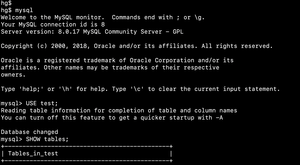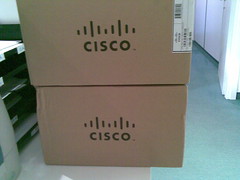 Image via WikipediaI won't lie, finance was not my best subject area when I went back to school and earned my MBA. It looks like simple addition and subtraction but appearances are in fact VERY deceiving. Yesterday I threw the word margin around a lot. I know what the word margin means, but I'm a little unsure if it was the right word to use in that context. It probably would have been safer to insert the word "profit" in front of margin whenever I used it. having said that, on with the show...
Image via WikipediaI won't lie, finance was not my best subject area when I went back to school and earned my MBA. It looks like simple addition and subtraction but appearances are in fact VERY deceiving. Yesterday I threw the word margin around a lot. I know what the word margin means, but I'm a little unsure if it was the right word to use in that context. It probably would have been safer to insert the word "profit" in front of margin whenever I used it. having said that, on with the show...I'm going to take a bit of time today to illustrate why 30% is a lot amount of money for Apple to be extracting from transactions that involve products with relatively high per unit costs to the companies who are selling them.
My examples will be based on what I know (or think I know) about the Martin guitar company and how their instruments are typically bought and sold.
The Martin Guitar company is rumored to sell guitars to their dealers at 50% of their published retail price. Since the 1960's knowledgeable buyers have expected and been able to get 40% off of the MSRP if they shopped around a bit or knew of a dealer who was willing to honor that mark down.
Lets assume Martin has a guitar with an MSRP of $1000. They sell it to their dealers for
$500
Knowledgeable purchasers know that they can find a dealer who is willing to sell for 60% of the MSRP which would be
$600
In this case the dealer pockets $100 from this transaction. Note there are additional costs such as labor and warehousing but we're going to ignore them. $100 is 20% of the shop owners $500 investment. That's not a bad return, particularly if you can turn your inventory over quickly.
Now lets pretend that the guitar was sold via an iPad running a custom App that the dealer created. In that case the numbers would be as follows.
Dealer pays
$500
Buyer pays
$600
Apple gets 30%*$600 which would be
$180
Dealer gets
$600-$180
which equals
$420
of revenue on their $500 purchase. This is a net loss of 16% for the dealer. Clearly you couldn't stay in business based on that transaction.
Lets assume though that you can find a few customers who are willing to pay 75% of the MSRP. This is possible since 25% will seem like a decent discount to shoppers who are not familiar with how this market works.
In this case the guitar sells for
$750
Apple gets 30%*$750 which would be
$225
If we subtract Apple's $225 from the sale price...
$750-$225
would equal
$525
OK, the dealer made a profit, albeit a very small one at 5% ($25/$500). Meanwhile Apple pockets six times as much money and had zero skin in the game money wise. Not a bad racket at all. In the case where buyers are paying 60% Apple would get half the profits by taking just 5% of the transaction. As an aside, this is also why even a 1.5% transaction fee by credit cards can cause some companies distress. If you're profit margin is 3% a 1.5% charge is going to eat half your profits.
Lets put these two scenarios into a handy little table.
Profit @ |W/Apple |Direct
60% Retail|-16% | 20%
75% Retail| 5% | 50%
Inserting Apple into this equation is clearly not a win for the dealer under normal circumstances. If Apple has a big pool of potential customers who don't mind paying MSRP it might be though. In that case the picture looks pretty good for the dealer as they would make $350 on the sale of that $1000 MSRP guitar which would be a 70% profit margin. I'm not going to go through the math on that one but it should be fairly straight forward based on the examples above.
People who buy Apple products tend to be more affluent than average, but they also tend to be knowledgeable about how pricing works in the real world so if I were a dealer I wouldn't invest in an iOS app under the assumption I'd find a bunch of customers willing to pay retail or anything close to it.
As I said in my previous entry none of this is a surprise to Apple. The 30% isn't about collecting revenue in the case of this type of transaction. It's about eliminating their competition and creating an opportunity for Apple when they need to add some additional dollars to their bottom line. By creating this opportunity for themselves they are eliminating choice for their customers and creating a coercive relationship with both their customers and their potential competition/partners.




































